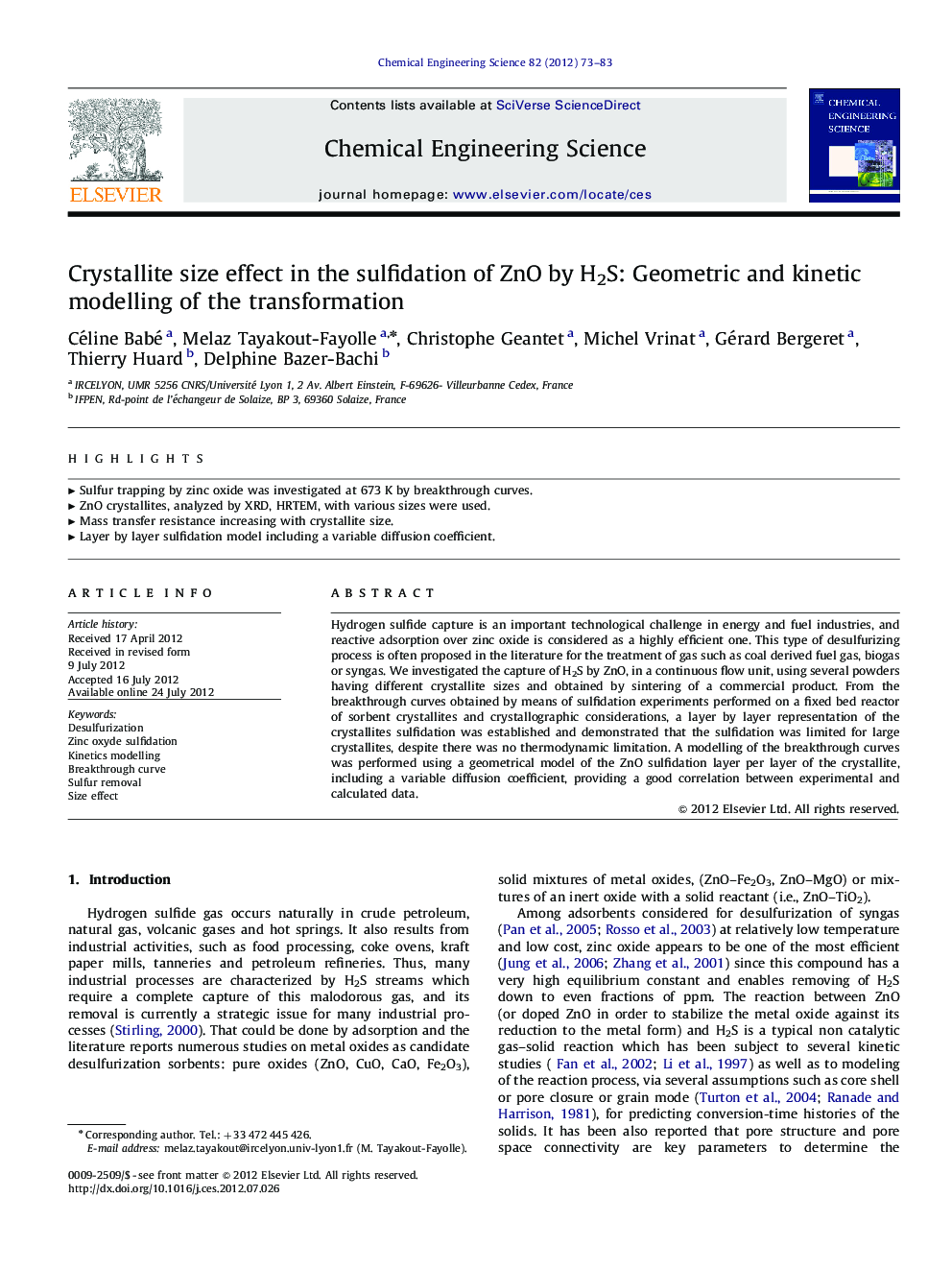| Article ID | Journal | Published Year | Pages | File Type |
|---|---|---|---|---|
| 155571 | Chemical Engineering Science | 2012 | 11 Pages |
Hydrogen sulfide capture is an important technological challenge in energy and fuel industries, and reactive adsorption over zinc oxide is considered as a highly efficient one. This type of desulfurizing process is often proposed in the literature for the treatment of gas such as coal derived fuel gas, biogas or syngas. We investigated the capture of H2S by ZnO, in a continuous flow unit, using several powders having different crystallite sizes and obtained by sintering of a commercial product. From the breakthrough curves obtained by means of sulfidation experiments performed on a fixed bed reactor of sorbent crystallites and crystallographic considerations, a layer by layer representation of the crystallites sulfidation was established and demonstrated that the sulfidation was limited for large crystallites, despite there was no thermodynamic limitation. A modelling of the breakthrough curves was performed using a geometrical model of the ZnO sulfidation layer per layer of the crystallite, including a variable diffusion coefficient, providing a good correlation between experimental and calculated data.
► Sulfur trapping by zinc oxide was investigated at 673 K by breakthrough curves. ► ZnO crystallites, analyzed by XRD, HRTEM, with various sizes were used. ► Mass transfer resistance increasing with crystallite size. ► Layer by layer sulfidation model including a variable diffusion coefficient.
